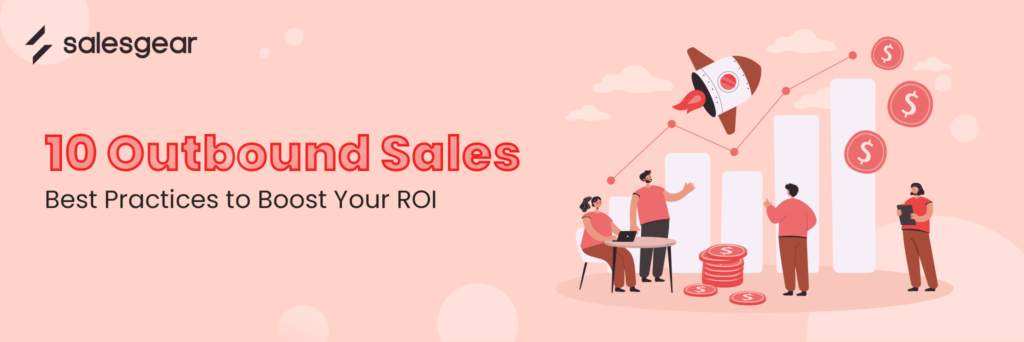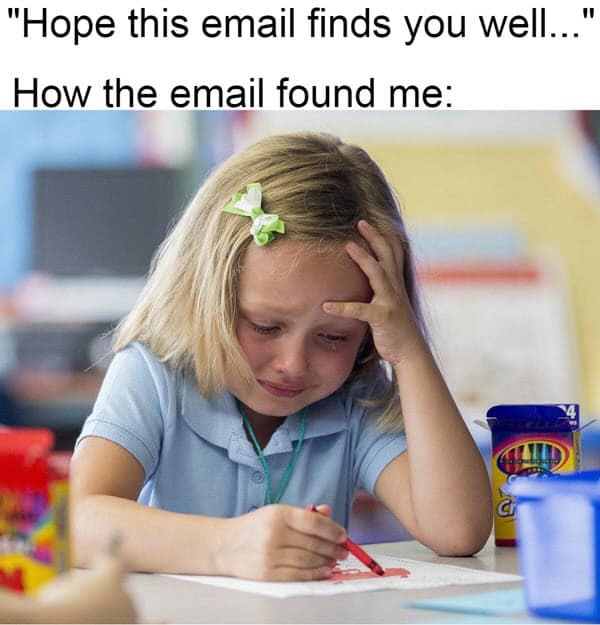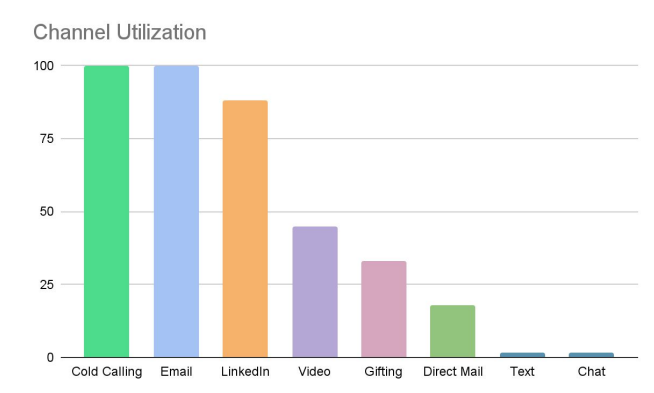
Are you currently facing roadblocks in your outbound sales process? You can overcome them with this list of outbound sales best practices.
It’s not uncommon to encounter various challenges that can hinder your ability to smoothly complete the process.
Let’s be real, these obstacles can be quite intimidating, and it’s natural to feel unsure about how to overcome them. Even something as simple as initiating conversations with potential prospects can become complicated all of a sudden.
However, there’s no need to worry. We’ve been in your shoes and learned things the hard way. To help you surmount your obstacles and develop a repeatable and scalable sales process, here are our top 10 outbound sales best practices. Let’s go! 🚀
1. Segment your market
Market segmentation is a crucial step in creating a successful outbound sales strategy.
It’s not enough to simply gather a list of prospects and add them to your sales campaigns. Every prospect is unique, and not all will be equally interested in your product. To effectively reach your target audience, you’ll need to segment them based on their common traits and needs.
There are various ways to segment your audience, and here are a few that we’ve found particularly effective:
- Segmenting by firmographics: This involves dividing your prospects based on factors like their company size, location, and industry.
- Segmenting by needs: This approach helps you identify what your prospects are looking for in your product, allowing you to focus on addressing their specific pain points.
- Segmenting by behavior: Behavioral segmentation involves understanding how your prospects interact with your product and the various channels they use to engage with your brand.
By taking the time to segment your target audience, you can tailor your outbound sales approach to better resonate with your prospects.

2. Focus on qualified lead generation
Once you have segmented your audience, it’s time to put on your detective hat and start qualifying your leads.
One way to do this is by using a tool like ZeroBounce to check if those email addresses are on the naughty or nice list. And don’t forget to do some light stalking on LinkedIn, Crunchbase, and other professional platforms to get a better sense of your prospects and their companies.
3. Make everything about the prospect
Avoid being a ‘me me me’ salesperson.

Constantly focusing on yourself during emails and calls may not engage your buyers 🥺
If your sales interactions lack empathy, there are chances for your prospects to perceive you as careless and impersonal.
Instead, put yourself in your prospect’s shoes and understand their needs & concerns rather than focusing on closing the deal. If you can solve their problem, then you are already on your way to closing the deal.
So, make it all about them + what they do.
4. Embrace multi-channel engagement
Email can be the major channel of outreach but it is not the only engagement channel.

Leverage all the outbound sales channels that you have at your disposal. Try following up with your prospects over the phone, sending a connection request on LinkedIn, or messaging them on LinkedIn or wherever you find them.
The goal is to establish a healthy relationship with the prospect but where you do it is not the primary factor. You should communicate with your prospects where they are, not where you are active.
With the LinkedIn scene on fire right now, you will find a significant number of potential prospects on the platform posting their thoughts.
According to Operatix, email, call, and LinkedIn are the most utilized channels by salespeople.

5. Follow the 3×3 Rule for email
Hot take: Nobody has time for an email that looks like an epic tale.
Optimize your email content with the 3×3 rule: 3 paragraphs, each no longer than 3 lines. Keep in mind that a significant portion of emails is opened on mobile, so ensure that your emails are mobile-friendly.
Another key outbound sales practice is crafting brief subject lines without punctuation. Stick to a maximum of 4 words and no punctuation.
Most importantly, do not equate formality with professionalism. You don’t have to address your prospect as “Dear Mr. Bob”. Kinda roll with “Hey Bob”. Be conversational.
So, the formula for a persuasive email = straightforward & simple subject line + the problem they have + how you can help them.
6. Make an effective autopilot template
Almost all SDRs on LinkedIn feel the pressure to be unique and personalize their outreach, but let’s not lose our minds here, folks 😅
Let’s face it – ain’t nobody got time to craft a bespoke email for every single prospect. But you could create an effective email template and have it on autopilot. Ensure you have these –
- A well-defined persona
- A clear problem that you are trying to solve
- A brief message that conveys why you are sending this email
- Try including an example of a situation where the prospect’s problem occurs
And don’t forget to include an example of a situation where your prospect’s problem occurs. This helps them understand that you “get” them and are there to help.
7. Have a solid outreach strategy
Executing outbound sales requires more than just brainstorming with your team. You need a solid plan and strategy that you can consistently follow over time. To create a plan, you must answer some key questions:
- Which channels do your prospects use to respond to your message?
- Where are they located and what is their time zone?
- How long should you wait before following up?
Gaining this knowledge takes time and experience. So, get together with your team to brainstorm various strategies. Then, select one approach for each of your prospect segments and see which one works best for you.
8. Focus heavily on automation
As a salesperson, you probably know how time-consuming and challenging it can be to handle all the tasks involved in the sales process. That’s why many of us are constantly on the lookout for tools that can automate some or all of these tasks. And when it comes to tools, the first one you should think about is your CRM.
A good CRM is the backbone of your sales team. It should be the central hub where you store all your customer and prospect data, and where you can access real-time insights and reports to inform your sales strategy.
With a reliable CRM, everyone on your team can make informed decisions based on the same data, and you can avoid duplication, errors, and confusion.
Additionally, you should invest in a robust sales prospecting & engagement platform to improve your outbound sales execution & overall experience.
There are separate tools for prospecting & engagement but if you are looking to save money and have fewer apps in your sales workspace – try exploring 2 in 1 tools like Salesgear where you could do both under one roof.
9. Be prepared to handle objections
We get it, getting a “no” from a prospect can be a tough pill to swallow. But it’s not the end of the world! You don’t want to start a war over it. Instead, take it as an opportunity to learn and improve.
The key to overcoming objections is preparation. However, don’t get stuck with a script. It’s more important to be flexible and adapt to the communication path your prospect takes.
So, listen carefully to your prospects, understand their objections fully, and do your best to address them. Make sure they are satisfied before moving on.
With enough practice and a lot of patience, you will eventually transform those discouraging “nos” into enthusiastic “yeses”!
10. Maintain a metrics dashboard
Ah, the good old outbound sales process – research, discovery, campaigns, negotiation, and closing deals. But wait, don’t call it a day just yet!
Measuring the impact of your engagement is the secret sauce to keeping your campaigns fresh and successful. With the right metrics in place, you can fine-tune your efforts and focus on what works best.
While there are infinite metrics you could track and many more that we do track, these are the critical ones to driving growth and efficiency.
- Lead response time: Time taken for a salesperson to respond to a new lead after they receive it.
- Conversion rate: A successful conversion rate depends on various factors, such as the quality of leads, the strength of your value proposition, and the effectiveness of your sales process.
- Win-loss ratio: Measures the success rate of your outbound sales efforts. A high win-loss ratio indicates that your sales team is effectively closing deals. According to SalesHacker, the average win-loss ratio for outbound sales is 40%.
- Customer satisfaction: You can conduct surveys to get valuable feedback on areas for improvement and help you identify more outbound sales best practices that you’d like to implement.
Head to the hottest guide to track the outbound sales KPIs suitable for your sales team [includes 3 free templates].
Final Thoughts
Implementing these outbound sales best practices can take your sales game to the next level. Remember to
- personalize and be relevant,
- have a clear plan,
- leverage automation,
- handle objections effectively,
- measure your progress to drive growth and efficiency.
While outbound sales may seem daunting, with the right strategies and tools, you can close deals like a pro.
So, go ahead and kickstart your next successful campaign! And if you’re a beginner, be sure to check out our guide to learn more and set up your outbound sales process for success. Best of luck! 🤞